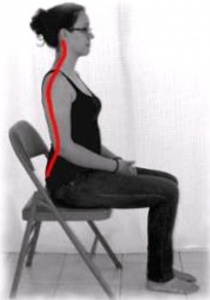 The facts are plain and simple – it is not always possible to prevent sciatica, and sadly, the condition may reoccur after the initial bout with it. What you may initially just pass off as sleeping the wrong way, or feeling uncomfortable after taking a long car trip, resulting in not knowing which way to sit due to the pain, may be sciatica. It most cases, sciatica can be relieved in a matter of weeks. But first, you need to pinpoint whether it is sciatica and what the heck is going on, then do consult with a spine specialist pronto, so that you can get on the road to recovery soon.
The facts are plain and simple – it is not always possible to prevent sciatica, and sadly, the condition may reoccur after the initial bout with it. What you may initially just pass off as sleeping the wrong way, or feeling uncomfortable after taking a long car trip, resulting in not knowing which way to sit due to the pain, may be sciatica. It most cases, sciatica can be relieved in a matter of weeks. But first, you need to pinpoint whether it is sciatica and what the heck is going on, then do consult with a spine specialist pronto, so that you can get on the road to recovery soon.
An ache or a twinge and sciatica
As mentioned above, do you have the ability to pinpoint whether you did something specifically to create that searing pain that radiates from your lower (lumbar) spine and travels to your buttock and all the way down the back of your leg? Those are the traits of sciatic pain. Another trait is that usually only one side of your body is affected. As a general rule, you might feel the discomfort almost anywhere along the nerve pathway, but it’s especially likely to follow a path from your lower back to your buttock and the back of your thigh and calf.
The pain from the sciatic nerve varies… it might be anything from a mild ache to a sharp, burning sensation. It might even be excruciating pain that some describe like a jolt or electric shock. Sciatica can be aggravated by prolonged sitting, or, even when you cough or sneeze.
As stated, sciatica’s symptoms are varied – you might experience numbness, tingling or muscle weakness in the affected leg or foot, or, you might have pain in one part of your leg and numbness in another part.
It’s hard to get rid of sciatica
You needn’t resign yourself to a lifetime of pain. Chances are once you have had a bout with sciatica, it will return again, but, having dealt with the malady, knowing how to avoid sciatica pain down the road, will help you to thwart its return.
To begin with, you can research the internet until you are blue in the face, and the same, or similar, suggestions will tell you how to combat the excruciating pain of sciatica, and the odds of sciatica returning. While virtual doctors and medical websites may provide valid suggestions for helping to ease your sciatic pain, your best bet is to consult with a professional who deals with the malady, and that would be a spine specialist in New Jersey. He or she will discuss your limitations, and assist you in identifying trigger points which aggravate your sciatic condition, as well as helping you avoid back injuries that might lead to sciatica. Your spine specialist will help construct a moderate exercise program that is tailor made just for you to get you back to feeling like yourself again.
Here are some suggestions to help get you moving and involved with an exercise regimen to keep sciatica from returning or from getting sciatica in the first place:
- Exercise regularly
To keep your back strong, pay special attention to your core muscles. The core muscles are in your abdomen and lower back and are essential for proper posture and alignment. Your doctor may recommend specific activities, among them:
Walking to promote overall physical fitness without putting undue strain on core muscles and/or the back, which could aggravate the condition further.
Practicing gentle forms of yoga which will strengthen the muscles and improve flexibility, allowing for sciatica sufferers to move and function better, and also to stray from the posture they favor all the time and into a posture that lessens the sciatica.
- Proper posture when you sit

Choose a seat with good lower back support, armrests and a swivel base. Chose a small pillow, or even a rolled towel, to place at the small of your back to maintain its normal curve. Be sure to keep your knees and hips level.
- Use good body mechanics
For example, if you stand for long periods of time, be sure to rest one foot on a stool or small box from time to time. If you must lift something heavy, let your lower extremities do all the work. Moving straight up and down is key to avoiding back strain. Keep your back straight and bend only at the knees and hold the load close to your body. Avoid lifting and twisting simultaneously because it strains your lower back, and, if possible, try to find a “lifting partner” if the object is heavy or awkward.
Consult with a doctor
Mild sciatica usually goes away over time, but if the pain has not abated in one week, or becomes progressively worse, you should make an appointment with a spine specialist as soon as possible.



